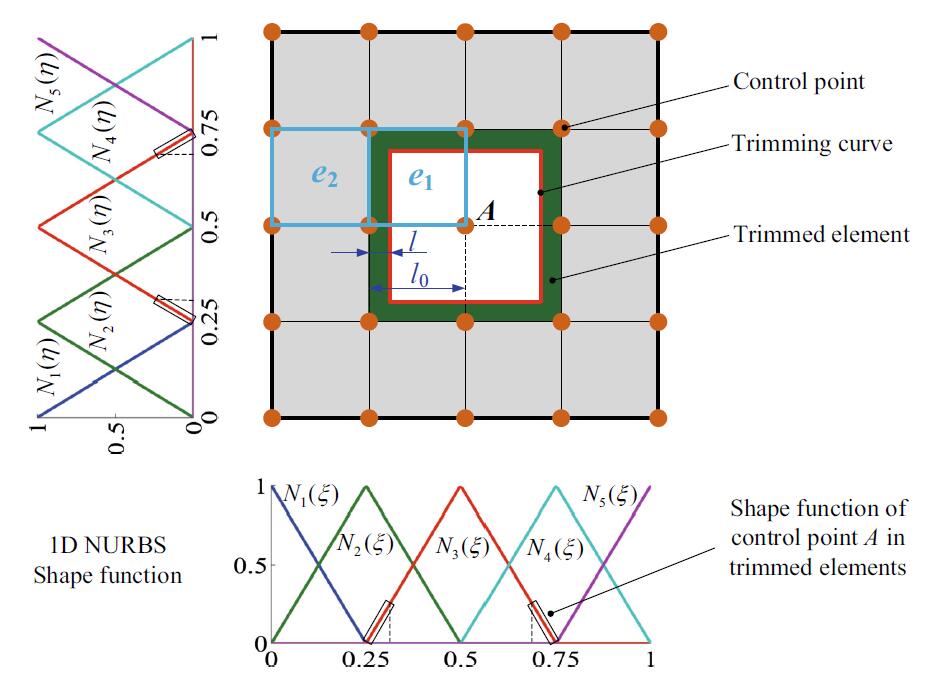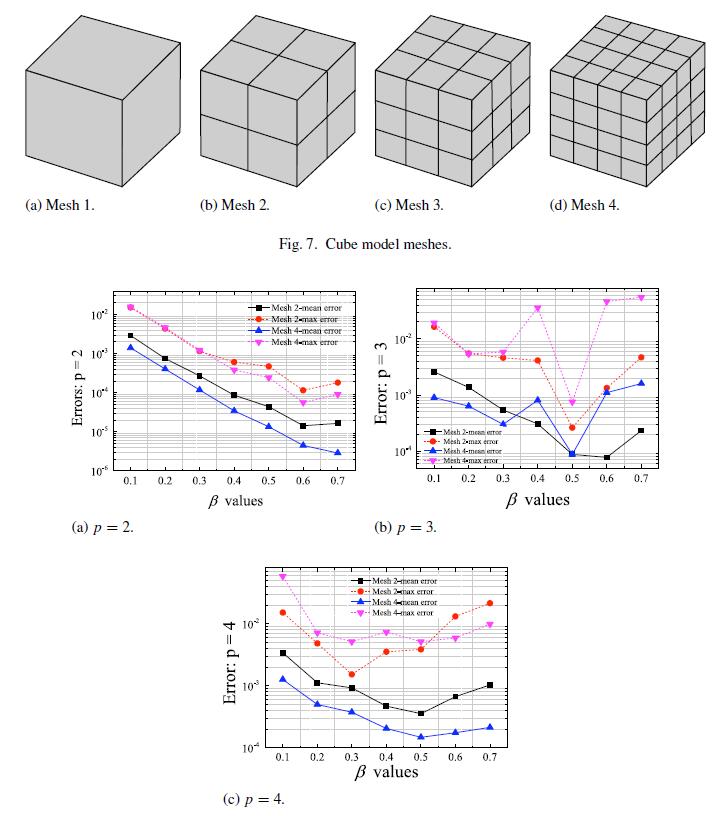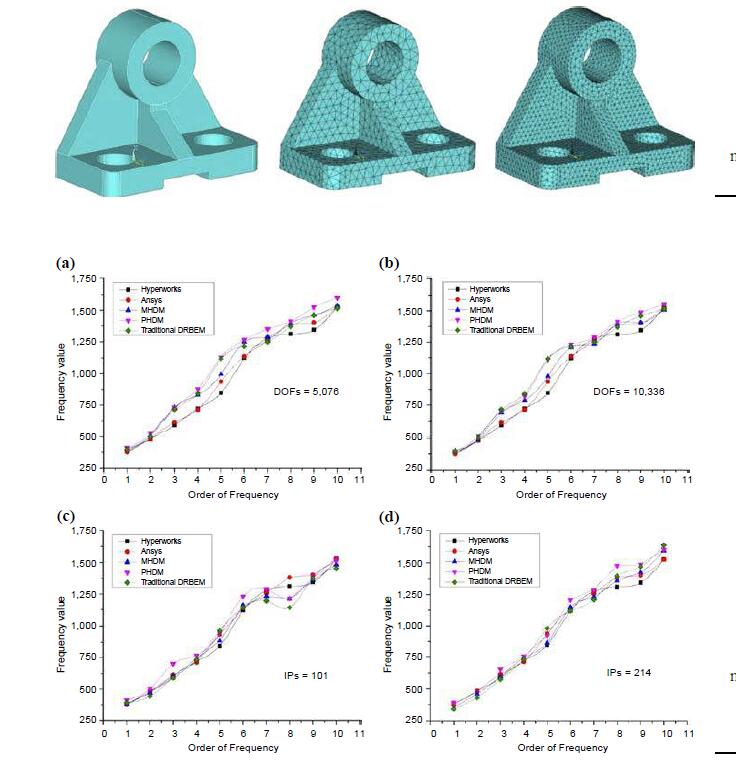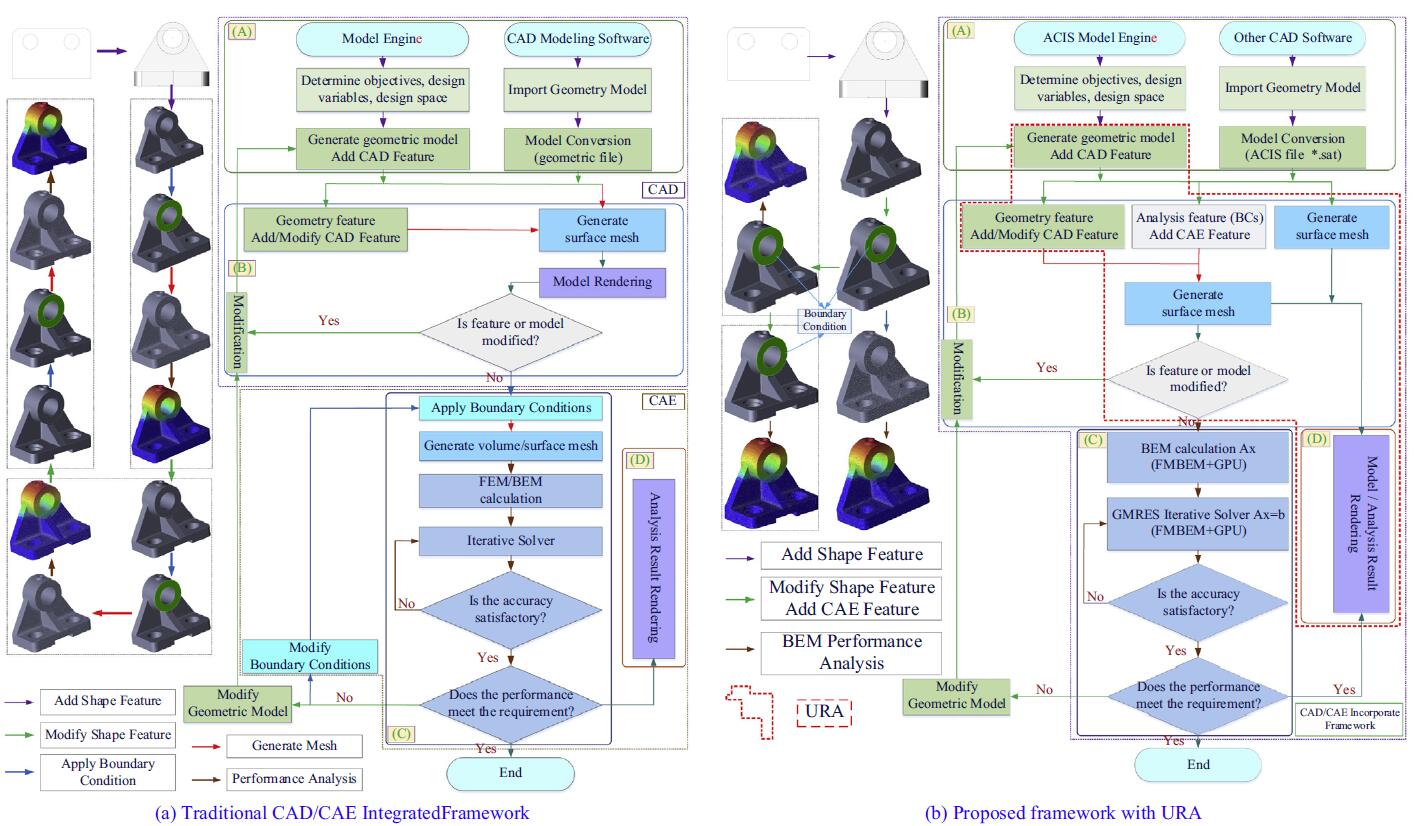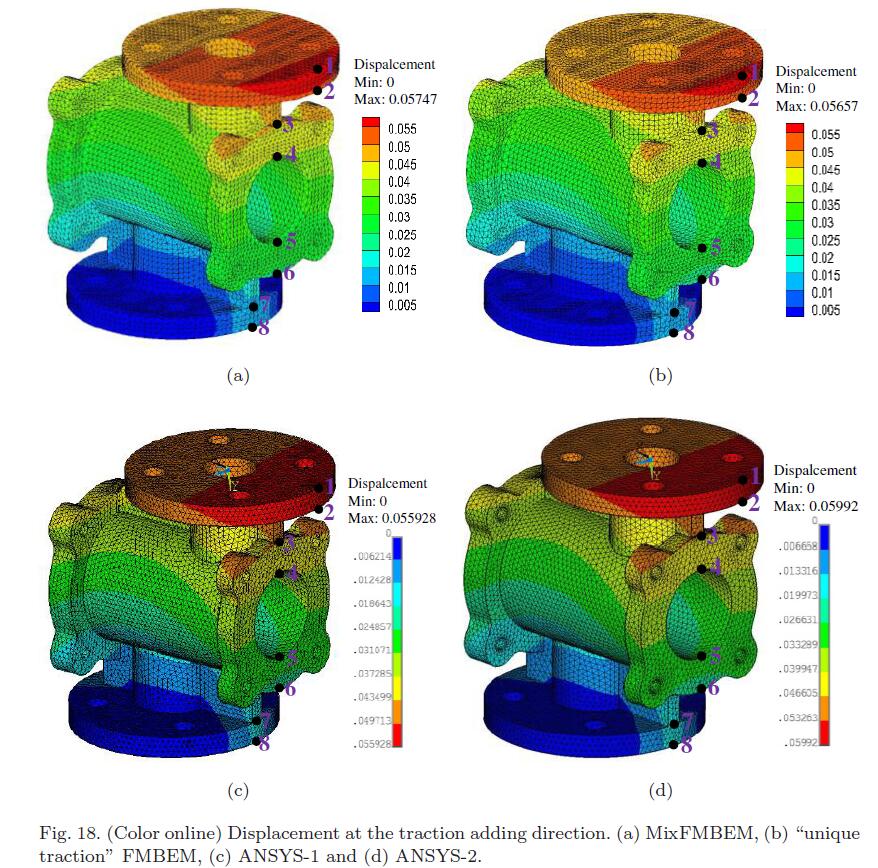A multi-patch nonsingular isogeometric boundary element method using trimmed elements
One of the major goals of isogeometric analysis is direct design-to-analysis, i.e., using computer-aided design (CAD) files for analysis without the need for mesh generation. One of the primary obstacles to achieving this goal is CAD models are based on surfaces, and not volumes. The boundary element method (BEM) circumvents this difficulty by directly working with the surfaces. The standard basis functions in CAD are trimmed nonuniform rational B-spline (NURBS). NURBS patches are the tensor product of one-dimensional NURBS, making the construction of arbitrary surfaces difficult. Trimmed NURBS use curves to trim away regions of the patch to obtain the desired shape. By coupling trimmed NURBS with a nonsingular BEM, the formulation proposed here comes close achieving the goal of direct design to analysis. Example calculations demonstrate its efficiency and accuracy.

